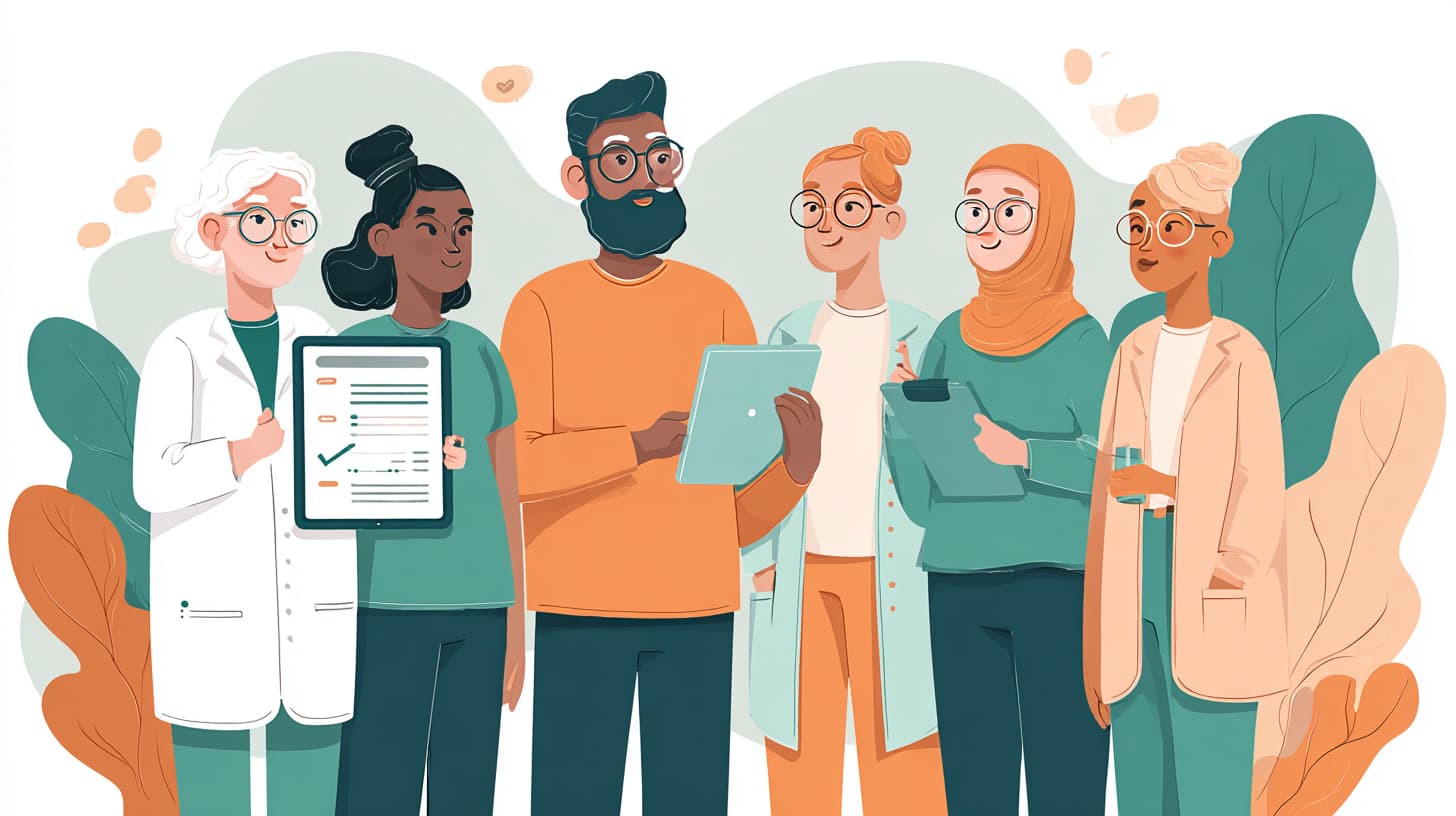Nine Practical Applications of Remote Patient Monitoring

Mr. Lee is a 69-year-old living with congestive heart failure. Despite his best efforts, his weight can fluctuate by several pounds in just two days, a sign of fluid retention that often leads to hospitalization. Before remote patient monitoring (RPM), his cardiologist would only discover this at a follow-up visit or during an emergency admission. With an internet-connected scale at home, Mr. Lee’s care team now receives real-time alerts when weight increases, allowing them to adjust diuretics within hours rather than waiting for a crisis.
This is the promise of RPM: shifting healthcare from reactive to proactive, keeping patients healthier at home while helping practices manage resources more effectively. RPM is no longer experimental—it is a core tool for chronic disease management, preventive medicine, and value-based care.
What is remote patient monitoring
Remote Patient Monitoring (RPM) refers to the use of digital technologies to collect patients’ health data outside traditional clinical settings and securely transmit it to providers for assessment and intervention. RPM services are supported by dedicated CPT codes (99453, 99454, 99457, 99458) that reimburse for device setup, data transmission, and time spent on care management.
To qualify under the general rules, the devices must be medical devices as defined by the FDA, and the data must be automatically transmitted, and manual self-reporting doesn’t meet requirements for device-supply codes. At least 16 days of data in a 30-day period are required for reimbursement of CPT 99454.
Common RPM devices
RPM is only as powerful as the devices behind it. Each tool extends the reach of the clinic into the patient’s daily life, capturing data that tells a fuller story than snapshots in the exam room. Here is a list and the most common devices used for RPM:
Blood pressure cuffs. Connected BP cuffs are the backbone of RPM programs for hypertension, heart failure, and kidney disease. They uncover hidden trends like masked hypertension (normal in the office, high at home) and let providers track the real-world effects of medication, diet, and lifestyle changes, producing a richer dataset for clinical decisions.
Glucometers and continuous glucose monitors (CGMs). Diabetes management has been transformed by CGMs that deliver readings every few minutes and alert patients to highs and lows in real time. Data flows directly to providers and can even link to insulin pumps for automated adjustments. Patients see trends, providers get early warnings, and costly complications are avoided. For example, UC Davis and other centers have shown how remote review of CGM data can reduce acute events like diabetic ketoacidosis.
Pulse oximeters. A drop in oxygen saturation can mean the difference between stability and crisis in COPD, asthma, pneumonia, or cancer care. RPM-enabled pulse oximeters transmit readings continuously, triggering alerts when saturation falls below safe thresholds. Programs during COVID-19 proved that structured home oximetry can triage patients effectively, prevent unnecessary admissions, and reduce mortality.
ECG patches and ambulatory monitors. Modern ECG devices are lightweight and continuous, capturing rhythm disturbances that short-term Holters often miss. For atrial fibrillation or unexplained fainting, these devices provide real-time alerts to cardiology teams. This can be particularly helpful in rural cardiac programs, to bring high-quality arrhythmia care to patients who otherwise face long travel times.
Peak flow meters and spirometers. For asthma and COPD, peak flow meters reveal early declines in lung function before patients notice worsening symptoms. Bluetooth-enabled versions send data straight to EHRs, giving providers a rolling view of lung capacity. For patients prone to under-reporting, continuous monitoring can be lifesaving.
Thermometers. Fever can be a subtle but critical signal in immunocompromised or post-surgical patients. Connected thermometers feed data into RPM platforms, allowing providers to detect neutropenic fever in cancer patients or surgical wound infections earlier than clinic visits would allow.
Scales. Scales in RPM do more than track obesity—they are a lifeline in heart failure and chronic kidney disease. New FDA-cleared scales measure both weight and fluid retention, making it possible to differentiate between fat gain and water overload. When connected to RPM dashboards, small changes trigger immediate adjustments in therapy, reducing hospitalization risk.
Together, these devices create a continuous safety net, painting a far richer and more accurate picture of health than sporadic office measurements.
9 practical applications of RPM
Originally designed for chronic and acute disease, RPM now spans to geriatrics, oncology, behavioral health, and beyond. Here are ten of the most impactful applications, each backed by evidence and practice.
1. Chronic disease management. Chronic diseases like diabetes, asthma, and heart failure are the most costly and prevalent drivers of healthcare use. RPM shifts their management from episodic to continuous. Daily glucose, weight, and blood pressure readings highlight problems before they escalate, empowering providers to adjust care plans in real time. Instead of waiting for an ER visit, care teams intervene early, preventing complications and cutting costs.
2. Postoperative care. After surgery, patients leave the hospital with risks still looming: infection, bleeding, blood clots. RPM fills the gap with daily monitoring of vitals and recovery metrics. Pulse oximeters, thermometers, and mobility trackers detect trouble early, while activity sensors confirm rehabilitation is on track. Patients heal at home with confidence, while providers gain visibility into recovery without unnecessary readmissions.
3. Elderly care. As populations age, elderly patients require more care outside hospital walls. RPM programs tailored to seniors include fall sensors, bed monitors, and motion detectors, in addition to traditional vitals. Families gain peace of mind, clinicians get continuous oversight, and hospitalizations from preventable incidents decline. For aging societies, RPM is not just an option—it is becoming a necessity.
4. Medication management and titration. Adjusting medications has always required trial and error across multiple visits. RPM streamlines this by capturing the physiologic response in real time. Whether titrating heart failure drugs, insulin, or antihypertensives, connected devices reveal effectiveness and side effects earlier. Providers can act immediately, ensuring both safety and efficacy while saving patients repeated office visits.
5. Remote rehabilitation. For orthopedic, cardiac, or neurologic patients, physical therapy is critical, but often hard to access. With RPM, wearables and apps track movement, balance, and exercise adherence, while video visits allow therapists to fine-tune recovery plans. Remote rehab reduces travel barriers, increases adherence, and accelerates return to function.
6. Pulmonary management. Asthma and COPD patients benefit from daily lung function data via peak flow meters and oximeters. Flare-ups are detected days before they become ER visits. During respiratory infection surges like COVID-19, structured pulse-ox monitoring programs proved capable of triaging thousands safely at home, preserving hospital resources and improving patient safety.
7. Hypertension management. Hypertension affects nearly half of adults in the U.S. RPM offers a scalable solution: dozens of home BP readings provide a truer picture than occasional office checks. Programs at Mass General Brigham and elsewhere show how digitally enabled hypertension management lowers average blood pressure and cholesterol, leveraging pharmacist-driven protocols to scale effective care.
8. Behavioral health integration. Mental health often fluctuates between appointments, and self-report is limited. RPM fills this gap with wearable data on sleep, heart rate variability, and activity. Daily check-ins and mood surveys enrich therapy and medication management. For patients with co-morbid conditions, integrating behavioral health into medical RPM ensures coordinated, whole-person care.
9. Oncology and immunocompromised patient monitoring. For patients on chemotherapy or with weakened immune systems, early intervention is essential. Fever or weight loss can quickly become life-threatening. RPM tools like thermometers and scales detect small changes that trigger immediate outreach. Patients avoid unnecessary exposure to hospital environments while receiving timely, lifesaving interventions at home.
10 benefits of RPM
The practical applications translate directly into value for patients, providers, and payers. Here are ten benefits supported by research and clinical experience.
1. Timely detection of health issues. Continuous data flow means problems are caught earlier. Diabetes patients see trends that motivate diet adjustments; heart failure patients get medication changes before hospitalization. Early intervention is prevention in action.
2. Enhanced patient engagement. Seeing their own data makes patients active participants. Mayo Clinic’s RPM program showed that patients not only avoided more hospital visits but also felt more empowered to manage their care. Engagement drives adherence, which drives outcomes.
3. Cost-effectiveness. Hospitalizations drive costs. RPM reduces them. Studies from Cleveland and ISPOR show fewer admissions and modeled cost savings, especially in hypertension, COPD, and heart failure. For health systems and payers, the ROI is compelling.
4. Streamlined workflows. RPM allows teams to monitor many patients at once, triaging by severity. Nurses or pharmacists can handle alerts, escalating only when necessary. Physicians’ time is preserved for the most complex cases, increasing overall efficiency.
5. Support for value-based care. Value-based contracts reward outcomes, not volume. RPM helps practices succeed by preventing exacerbations, improving quality scores, and aligning with payer incentives. It makes the business case for proactive care.
6. Enhanced clinical decision-making. Longitudinal data paints a richer picture than snapshots. Clinicians can taper meds when trends are stable, or intensify therapy when deterioration appears. Treatment becomes personalized, safer, and more precise.
7. Increased patient volume. Stable patients monitored remotely free up in-office time slots. Practices see more new or complex patients without overextending staff. RPM increases clinical capacity while maintaining quality.
8. Integration with electronic health records (EHRs). Modern RPM platforms integrate directly into EHRs, ensuring that device data updates patient charts automatically. This reduces duplication, speeds documentation, and enhances team-based care coordination.
9. Facilitation of population health management. RPM data at scale reveals trends across patient panels or communities. During outbreaks, it shows where infections are surging. For chronic disease, it highlights which populations need more support. Providers and public health systems use this data to target interventions more effectively.
10. Improved patient satisfaction. Patients consistently report high satisfaction with RPM. They appreciate the convenience, reassurance, and personalization. In Mayo Clinic’s surveys, over 89% felt more confident managing their health, and 93% would recommend RPM to peers. Satisfaction translates to loyalty and long-term engagement.
Remote Patient Monitoring is not just about gadgets: it is about fundamentally redesigning care delivery to be proactive, patient-centered, and efficient. From heart failure to hypertension, postoperative care to behavioral health, RPM has proven its value across specialties. Ready to unlock the benefits of RPM? Lear more about RPM with Lara Health and discover how easy it is to integrate RPM into your practice.
FAQs
Can wearables be used for RPM?
RPM billing generally requires FDA-defined medical devices capable of automatically transmitting physiologic data. Consumer devices like smartwatches may be integrated in some cases, but billing for RPM requires meeting CMS standards.
How many days of data are required to bill RPM?
For CPT 99454, at least 16 days of data in a 30-day period are required, unless specific exceptions apply.
Can RPM and CCM be billed in the same month?
Yes. Both may be billed if requirements are met, but the same minutes of care cannot be double-counted.
Which patients are the best candidates for RPM?
Those with hypertension, heart failure, COPD/asthma, insulin-treated diabetes, post-operative needs, or cancer treatment, especially when close monitoring can prevent hospitalizations.
Does insurance cover RPM?
Medicare as well as most commercial insurers reimburse for RPM under defined CPT codes.
Sources
HHS, “Remote Patient Monitoring: Coding & Billing,” Telehealth.HHS.gov, 2024.
CMS/Medicare Learning Network, “Telehealth & Remote Patient Monitoring (MLN901705),” 2024.
HHS, “Remote Patient Monitoring Basics & Coding,” Telehealth.HHS.gov, 2024.
Mass General Brigham Accelerator for Clinical Transformation, digitally enabled hypertension program outcomes, 2023–2024.
American Diabetes Association, “Standards of Care in Diabetes—2024: Diabetes Technology,” 2024.
Padula WV, et al. “A Cost-Utility Analysis of Remote Pulse-Oximetry Monitoring for COVID-19,” Value in Health, 2022.
EClinicalMedicine/Lancet reports on COVID Oximetry @home observational outcomes, 2021–2022.
Wong AKI, et al. “Analysis of Discrepancies Between Pulse Oximetry and Arterial Oxygen Saturation,” JAMA Network Open, 2021.
Bodyport Cardiac Scale—FDA-cleared cardiac monitoring scale (company site/device information), 2023–2024.
AHA/ACC/HRS statements and reviews on ambulatory ECG monitoring and wearable patches, 2017–2024.
Cleveland Clinic Journal of Medicine, “Ambulatory ECG monitoring in the age of smartphones,” 2019.
Liu SY, et al. “Feasibility and Appropriateness of Home Pulse-Oximetry RPM in Oncology Post-Discharge,” JCO Clinical Cancer Informatics, 2024.
ONC, Interoperability Standards Advisory and RPM-relevant FHIR resources, 2024–2025.
AHA Scientific Statement, “Data Interoperability for Ambulatory Monitoring of Cardiovascular Disease,” 2024.
Lara Health's platform helps medical practices deliver better patient outcomes and stronger financial performance.
Our platform streamlines chronic care management (CCM), remote patient monitoring (RPM) and advanced care coordination − empowering your team to focus on care, not paperwork.
With a powerful billing engine supporting 55+ CPT codes, Lara Health simplifies reimbursements and optimizes every step of your workflows.
See how it works, or discover how Lara Health is shaping the future of connected care.
To learn more about our mission, start here. If you're looking for a new career direction, check out our recruiting pages.




